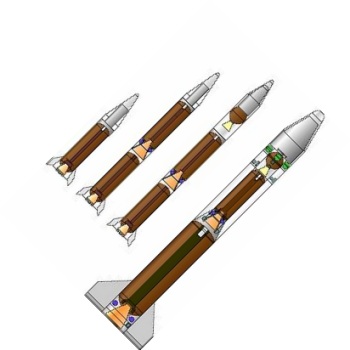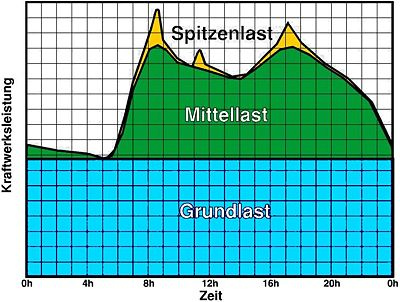Back When Nelson Mandela Was a Terrorist…
Posted on May 26th, 2010 at 4:38 pm by Steve

The government of Israel agreed to sell nuclear-armed Jericho missiles to the apartheid South African government in 1974.
London’s Guardian revealed on Sunday evidence that Shimon Peres signed a top-secret agreement with P. W. Botha to sell to South Africa the long-range Jericho nuclear missiles and warheads. Both men were the Defense Ministers of their respective nations, and each would later become head of state. Peres and the Israeli government deny that such an agreement ever existed. Ultimately, South Africa chose not to purchase the missiles from Israel, and later developed its own nuclear weapons. (The musical satirist Tom Lehrer joked in 1967 of their nuclear ambitions, “South Africa wants two – that’s right! – one for the black and one for the white!”)
Adding yet another layer of painful irony, in a letter to South Africa’s Secretary for Information in 1974, Shimon Peres wrote,
“This cooperation is based not only on common interests and on the determination to resist equally our enemies, but also on the unshakeable foundations of our common hatred of injustice and our refusal to submit to it.“
Indeed, one can only imagine “the unshakeable foundations of common hatred (…)” that Israel and apartheid South Africa shared.
And so it goes.
“Glenn Beck has Nazi Tourette’s”
Posted on May 14th, 2010 at 12:11 am by Steve
Authority, Control, and Trust in Human-Machine Systems
Posted on May 13th, 2010 at 1:58 pm by Steve

Automated systems in aircraft reduce some risks at the cost of increasing other risks. Incorrect or inconsistent applications of automation to complex human-machine systems can have unexpected and even deadly consequences.
NASA Ames Research facility has done a lot of thinking about the proper ways to design these systems. Dr. Charles Billings, in particular, has published a number of excellent papers on the subject. Here’s an excerpt from his 1995 paper, “Human-Centered Aviation Automation: Principles and Guidelines”, where he asks (and answers) a fundamental design question:
If the human operator cannot effectively oversee and retain management authority over his tools, he has lost authority over the entire operation. Will this be a tenable situation?
I believe it comes down to a matter of trust. Will we provide pilots with full authority, train them carefully, and trust them to do “the right thing”, whatever it is in particular circumstances? Or will we circumscribe pilot authority by making it impossible to damage the airplane, and in the process perhaps make it impossible to use its ultimate capabilities if they really need them…? My bias, based on a number of cases in which pilots have been able to recover from extreme emergencies, and other cases in which they did not recover but could have had they used all available resources, is that command authority should be limited only for the most compelling reasons, and only after extensive consultation with both test and line pilots or controllers at “the sharp end” of the system.
Boeing and Airbus, the world’s largest manufacturers of transport aircraft, seem to draw the “compelling reasons” line in different places. Under the Airbus computers’ “Normal Law” operating mode, the pilots cannot command inputs that would cause the airplane to enter an dangerous condition (for instance: they cannot stall the plane by increasing the angle of attack without adding thrust; the computer will prevent a stall from happening). Whereas Boeing’s approach is to make dangerous conditions increasingly difficult to cause (for instance: the Boeing’s control column will provide increased resistance against a pilot who is about to stall the airplane, making it physically more difficult for the pilot to cause this condition, but still allowing the possibility).
This continues to be an area of active study and discussion throughout the aviation community, and it has broader application as we interact more often with complex machine-controlled systems. Many pilots decry the apparent loss of airmanship due to the increase in cockpit automation.
The True Cost of Wind Energy
Posted on May 2nd, 2010 at 11:20 pm by Steve

The problem with wind energy is that it drives prices down! From Bloomberg news:
After years of getting government incentives to install windmills, operators in Europe may have become their own worst enemy, reducing the total price paid for electricity in Germany, Europe’s biggest power market, by as much as 5 billion euros some years, according to a study this week by Poeyry, a Helsinki-based industry consultant.
Jerome a Paris has an excellent discussion of the article over at The Oil Drum. He also links from there to an excellent (and entirely wonky) discussion of the proper pricing of wind power. It is a great article – one key takeaway is that wind power actually brings electricity prices down! Understanding that assertion requires a discussion of marginal costs, initial investments, demand curves, spot pricing, intermittency, externalities, and Spitzenlast (see above), but it’s totally worth it.
Another key point is that “market” pricing actually tilts the playing field toward fuel-based generation of electricity, because of its lower capital and debt-servicing requirements:
selecting market mechanisms to set electricity prices (rather than regulating them) is, again, not technology neutral: here as well, deregulated markets are structurally more favorable to fossil fuel-based generation sources than publicly regulated price environments.
So while I definitely wanted to highlight the issues around wind power (and point you to some excellent, informed commentary), I mostly just wanted an excuse to show that graph! SPITZENLAST!


